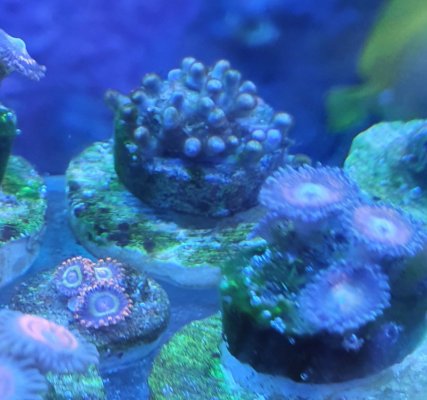- Joined
- Feb 19, 2018
- Messages
- 123
- Reaction score
- 12
Need some input.
Every year around this time I loose some zoanthus colonies and I cant figure out why.
Perfect colonies 25 - 100+ polyps which has opened up nicely throughout the year start to shrink up and melt away. Some of them stay closed for a long period of time only to be covered in some brown muscus before the start to melt others start to melt right away.
I keep a minimum standard of 90-95% NSW in all the measureable values - ATI ICP - and necessary dosing every other week.
Temp isnt the problem since I use teco chiller and keep the same temp all year around.
I use reverse osmosis (RO) water for refill.
Every coral entering the aquarium are dipped. Both in pest control and zoas with hydrogenperoxid.
So I would like to know what could be the problem?
Does "melting" spread from polyp to polyp and between colonies?
What sort of action do you recommend - another dip, keep in less light, keep in more light etc.. ??
At this moment I have almost 80 different kinds of zoanthus colonies - and some frags of course but only the following ones shows signs of melting/problem..
Sakura sunrise
Utter chaos
speckled fire and ice
speckled krakatoa
kung fu
Sunny D's
Some of them Im not to worried about since I have multiple colonies but some I dont..
Very grateful for all the help.
@Reefing_addiction
@footgal
@Zoa_Fanatic
Every year around this time I loose some zoanthus colonies and I cant figure out why.
Perfect colonies 25 - 100+ polyps which has opened up nicely throughout the year start to shrink up and melt away. Some of them stay closed for a long period of time only to be covered in some brown muscus before the start to melt others start to melt right away.
I keep a minimum standard of 90-95% NSW in all the measureable values - ATI ICP - and necessary dosing every other week.
Temp isnt the problem since I use teco chiller and keep the same temp all year around.
I use reverse osmosis (RO) water for refill.
Every coral entering the aquarium are dipped. Both in pest control and zoas with hydrogenperoxid.
So I would like to know what could be the problem?
Does "melting" spread from polyp to polyp and between colonies?
What sort of action do you recommend - another dip, keep in less light, keep in more light etc.. ??
At this moment I have almost 80 different kinds of zoanthus colonies - and some frags of course but only the following ones shows signs of melting/problem..
Sakura sunrise
Utter chaos
speckled fire and ice
speckled krakatoa
kung fu
Sunny D's
Some of them Im not to worried about since I have multiple colonies but some I dont..
Very grateful for all the help.
@Reefing_addiction
@footgal
@Zoa_Fanatic
Last edited:




















